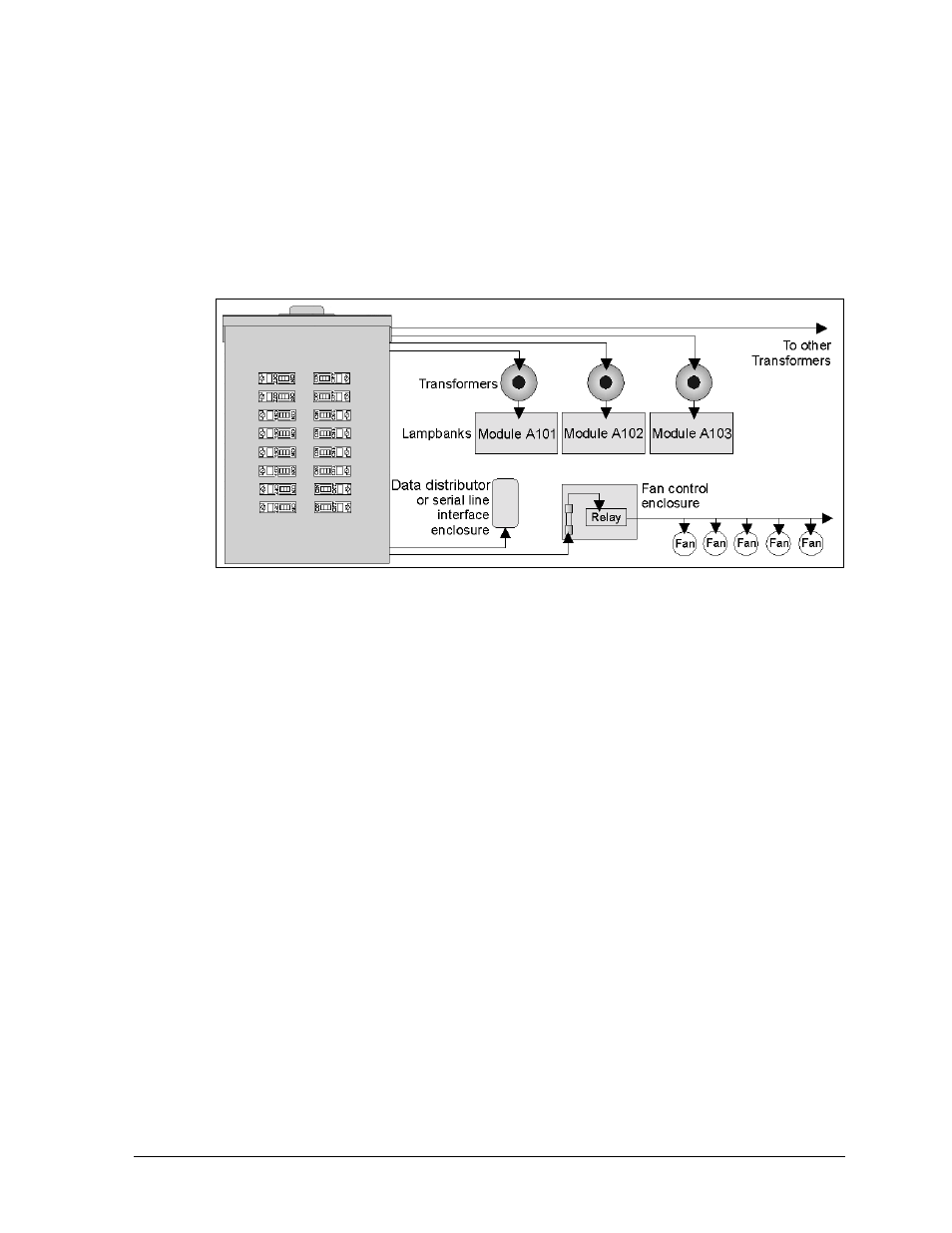Daktronics AB-1600-1.5,2.5 User Manual
Page 39

Maintenance & Troubleshooting
4-3
In addition, the panelboard also houses the breaker for the display controller (serial line
interface). Replace this breaker with only another of equal value.
Power to the fans route through the fan controller from the panelboard. If the display is blank for
30 minutes, the display controller can flip a relay, turning off the fans and extending the life of
both the fans and the filters.
Figure 40 provides a general summary of the power routing of the 1600 series large matrix line
receiver displays. Neutral and ground wires are not illustrated. The illustration is for conceptual
purposes only.
For detailed power and signal information, refer to the appropriate general schematic in
Appendix B, or the project specific schematic in Appendix A, if one was included. Refer to the
schematics listed in Section 4.2.
Line Receiver Signal Summary
Signal routing for Venus 4600 systems starts at the controller computer. This computer, running
Venus 4600 software, sends data to the Venus A/B transmitter interface over serial cable. The
DB15 male-to-male cable connects to the A/B transmitter at J1.
The data then goes to the serial line interface board within the display over fiber optic cable. The
cable runs from the J5 fiber transmit jack within the A/B interface to the J6 fiber input jack on the
serial line interface board. If a echo display is present, the data is shared with the displays by
running a fiber optic cable between J6 or J7 (TX) on the master display’s serial line interface to
J8 (RX) on the echo display’s serial line interface.
Data Distributor Signal Summary
Refer to Section 3.9 for a detailed explanation of the data distributor signal summary.
Ventilation & Temperature Sensing Summary
Daktronics 1600 series large matrix displays depend on a ventilation system and internal
temperature sensing equipment to prevent and monitor heat buildup within the cabinet. Excessive
heat shortens the life of all electrical components, including lamps.
The three critical parts of the ventilation system are the filters, the fans and the lenses. On the
back of the cabinet are a number of air filters, and in front of each air filter, within the cabinet, is
a fan. The fans draw cooler air from outside the display through the filters and into the display.
Figure 40: Power Routing Example
